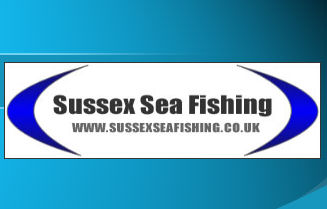


|
|
||||||||||||||||
|
|
|
|
 |
|
|
This page is a quick guide to some top spinning and lure fishing tips to help ensure you get that all important catch whether its a Makerel or a Bass.
TOP TIPS Picture: Giles Tipping GO LIGHT: Use light tackle such as 10-15lb line, use a light rod such as a carp rod or a specialist spinning rod and a suitable small reel to balance the set up. This will ensure that you have a good fight with the fish but just as importantly, you will be able to feel the lure working much more effectively. Also by travelling light it allows you to move around and try different areas of the beach, pier, harbor or river. WATCH THE WATER: watch the surface of the water for any bursts of action from whitebait or mackerel jumping to Bass chasing shoals of mackerel. Also the old fishermanís guide as to watching the seagulls can be very true as they can spot potential baitfish/food from the air and will never be far from the fish, watch out for them dive bombing the sea. WHAT TO CATCH: If there are Mackerel, Whitebait and Gars about then you can be sure that the Bass are not far behind. be quite and stealthy though as they can get spooked. You can use a Mepps spinner and ragworm or redrag (maddies) to spin for flounders and Gurnards by reeling in very slowly, stopping for a few seconds and reeling again across the sandy/muddy bottom, replace the treble that comes with the spinner for a size 4 or 6 single hook. I know this works as i have done it many a times and am surprised at how well it worked. I stumbled on it while trying to catch Bass and Mullet this way. To catch Schoolie Bass or Mullet retrieve the lure slightly quicker, Mullet will give you plenty of follow ups so just keep persevering. You can also team this lure with a bubble float for added casting distance and to ensure that it stays just a few feet under the surface when fishing for bass and mullet at places like the river Ouse or river Adur. STRUCTURES: You can catch Bass along open stretches of beach and Seaford and Brighton are very good examples of this, however, it is know that Bass like to hang around structures and ambush their Prey. Try fishing rocky marks, piers and groins for Bass using a variety of lures. The only thing i would say is to be prepared to lose a few lures and have spares at the ready. CHECK OUT YOUR MARK: Check out some of the marks you intend to fish before you actually fish it. for example, if you wanted to fish Rottingdean/Saltdean under cliffs then it may be worth checking them out on really low tides as this could allow you to spot potential fish holding features such as gullies or ambush points for bass to sit in. Then once the tide comes in you can try the spot and see how you get on. There is nothing more rewarding then finding your own little area and then catching a decent fish from it. EXPLORE: Try lots of venues, thatís the beauty of lure fishing as it allows you to move around and try different areas. Even in some marks you may not normally try its worth having a go as you could find a secret fish holding mark. REEL SPEED: Vary your retrieve rates when lure fishing, also change the action when twitching the rod tip, when you get a catch note the speed and action you were using for next time. LURE TYPE: You can be adventurous and try a variety of lures or you can try and match the lure/spinner to what the main food source of the area and your target species may be. For example if there are lots of mackerel about and you are after bass then try a fake mackerel but if you are fishing somewhere where there are a lot of sand eels, prawns, or whitebait then try using replicas of these. its a case of trial and error. My 4 favoutrite lures, just in case your interested are
This additional info (below) was supplied by Nick Thasarathar who I met on one of the SussexSeaFishing meets and has kindly wrote in with some fantastic tips. Since we last met I've tried all sorts of sea angling - beach, (Nick Thasarathar)
Copyright © SussexSeaFishing 2007 |
||
|
|
||
Copyright © 2006 SussexSeaFishing
craigide@hotmail.co.uk
#sussexseafishin
| Site Map |